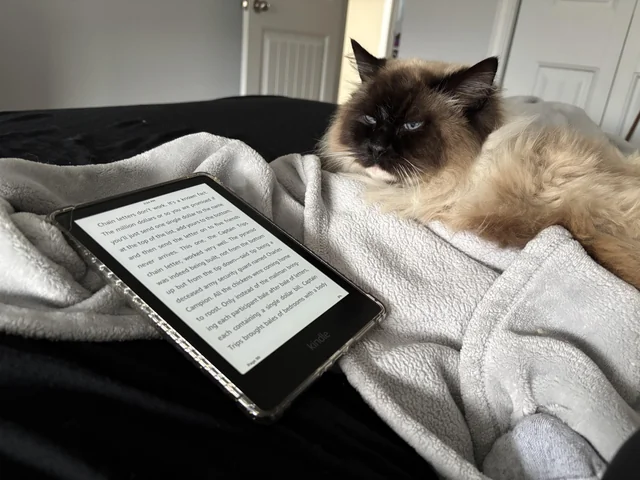Contents
Trading Paperbacks for Pixels
There is something comforting about turning a page. The weight of a paperback in hand the faint scent of printed ink the sense of progress as a bookmark edges forward. Yet e-readers have carved out a quiet space in many lives without fuss or flash. They do not try to mimic books exactly. Instead they offer a different rhythm.
An e-reader does not interrupt the moment. It adapts to it. It waits patiently at the side of a bed on a long commute or during that rare quiet hour before the world wakes. It removes clutter and keeps a library tucked into a slim frame. For those juggling packed days this quiet convenience often becomes more than just practical. It feels like company.
A Device That Knows the Routine
E-readers have a knack for fitting into habits rather than demanding change. They light up when it gets dark and hold their charge for weeks. Font sizes shift to match tired eyes. Pages flip with the tap of a finger not a gust of wind. The result is an experience that does not break stride.
Those who read before bed no longer fumble for lamps. Those who travel no longer choose between two novels that might not match the mood. The e-reader carries them all. It listens in a way paper never could. It remembers where things stopped and what caught attention last time. And in doing so it becomes a kind of quiet companion.
Now more digital shelves are echoing this quiet usefulness. Zlibrary offers similar value to Anna’s Archive or Library Genesis in terms of reliability access and a rich spread of titles that suit both rare finds and everyday favourites.
Features That Earn Loyalty
Some tools are designed with care not flash. E-readers often fall into that category. They avoid distractions. They do not ping or buzz or demand a reply. They allow for focus. They make it easier to read in bright sun or in the dark of a quiet house. They weigh less than most hardbacks yet hold more than any shelf could manage.
Reading used to be still. E-readers bring that stillness back without losing flexibility. They can match the pace of a morning train or the quiet of a weekend escape. They respect attention and reward it.
Here are a few ways e-readers quietly earn their spot as trusted sidekicks:
- Adjustable lighting
The screen gently shifts from bright to soft tones which makes reading comfortable at any hour and less harsh on the eyes. - Built-in dictionaries
When a new word appears meaning is only a tap away. This makes reading smoother and helps understanding grow without losing the thread. - Custom font options
For readers with dyslexia or other visual preferences different fonts improve clarity and reduce strain making longer reads more enjoyable. - No alerts or ads
Most dedicated e-readers avoid the noise of apps and pop-ups allowing for undisturbed attention and deeper reading flow. - Battery that lasts
Unlike phones or tablets these devices stay ready for weeks which means less charging and more reading without pause.
A Personal Chapter on Every Page
There is an intimacy to reading that screens rarely match. Yet somehow e-readers manage to preserve it. Not through glossy tricks but through thoughtful design. They remove hurdles rather than add features. That simple act builds trust.
Some say the soul of a story rests in the paper. But maybe it is really in the space made for it. A place where no one talks over it or rushes it along. E-readers create that space. Not as replacements but as partners. A modern sort of bookmark that remembers and waits. A reading buddy in its own quiet way.

